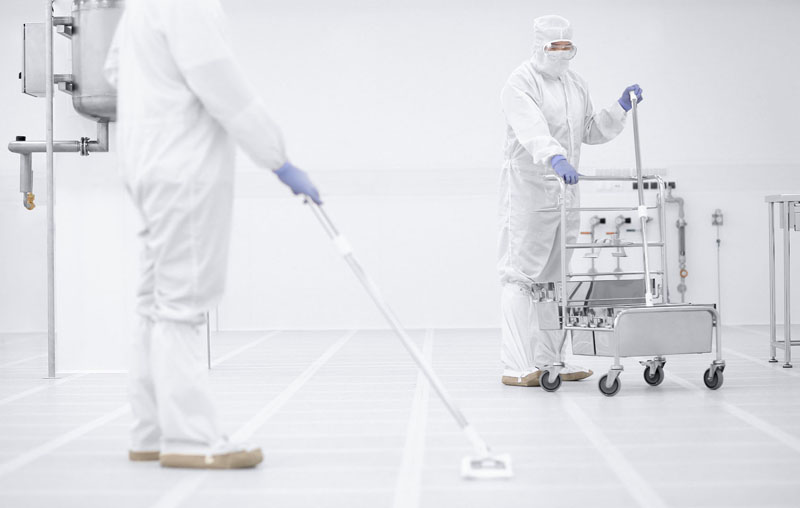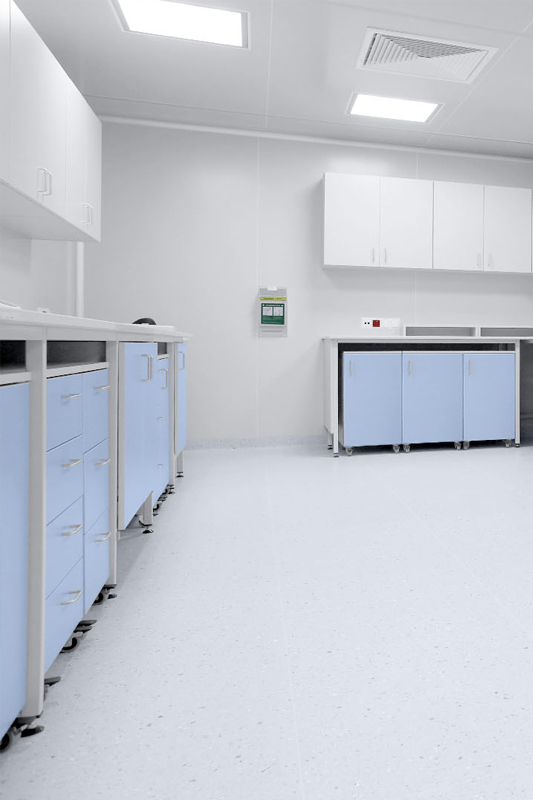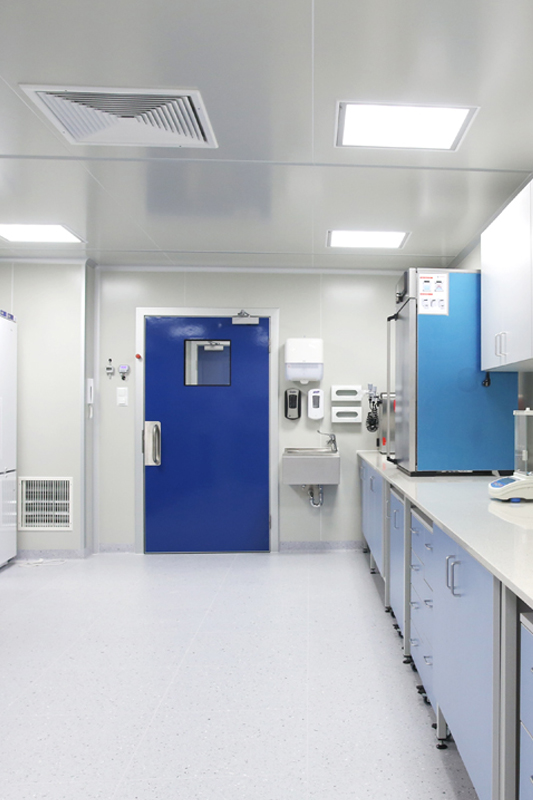Today, the pharmaceutical market is one of the largest and fastest growing industries in the world. The demand for improved quality of life and longevity, followed by rising healthcare spending, is increasing the competitiveness of pharmaceutical companies. This state of affairs encourages innovation in production processes and, as a result, improves the quality of the products themselves and increases volumes. This requires maximum use of space, investment in infrastructure and continuous development of skills.
The basic investment requirement of recent years is to carry out production in increasingly higher purity classes, i.e. to build the so-called clean room or to supplement the existing clean zones with elements increasing the purity classes and production reliability.
CLEANROOM
Working with sensitive materials requires a stable environment in which at least the following parameters are controlled: the number of air exchanges per hour, under/overpressure in the rooms (pressure cascades), temperature, humidity, the amount of particles with sizes measured in microns, microbiological protection, other parameters such as: antistaticity, anti-explosive zones, etc.
The construction and functioning of areas with such environmental parameters requires a clean zone. This can be done by creating a typical clean room, i.e. a complex of rooms with a cascade of pressures or by installing various arrangements (often mobile) such as clean boxes, personnel and cargo locks, transmission belts for clean transport, etc. For example, by installing a laminar air supply system, it is possible to increase the level of cleanliness across the worktop and provide a cleanliness class of up to ISO 3 in a simple and effective way. A similar solution is the fume hood. If you want to control, in addition to air cleanliness, e.g. humidity level and temperature, you can use a glove box. Both gloveboxes and laminar flow stations can work as stand-alone points or as line assemblies. At the same time, the laminar blow station and gloveboxes serve primarily to isolate the object from the surrounding external factors (e.g. work on cytostatic substances).
In clean room environments, the particles that are released into the environment and float in the air will be a source of contamination, so all sources of contamination (dust, bacteria, chemical fumes, etc.) must be eliminated or reduced, including those from equipment installed in the zone and process contamination. All objects must be designed in a special way (elimination of flat surfaces, impermeability, anti-static, anti-bacterial materials) and approved for use in a specific room. They must also be properly cleaned and used. This is important because every object can generate contamination and change the temperature and humidity values. Their location inside the room is important. So not only the basic structural elements of the zone such as walls, ceilings, floors, locks, but also furniture and even office equipment must be approved for use in a clean room and used in an appropriate manner.
KEEPING THE CLEANLINESS
The proper functioning of the zone requires constant attention to its cleanliness. Depending on the class of the zone, it should be equipped with a set of measures for this task, e.g.: decontamination mats, cleaning rollers, cloths, mops, chemical products.
Proper use of the above resources requires meeting a number of cleaning procedures, in this respect it is necessary to comply with the standards. Often, outsourcing specialised cleaning to a third party is the most advantageous solution, not least for economic reasons.
Research clearly indicates that the most important group of threats is the presence of people in the zone. The condition necessary for its functioning is a properly trained team of workers (also maintenance services).
The training program usually consists of two categories of matters – general procedures, including the rules of human presence in the clean zone and specific procedures created for a given unit based on its infrastructure and research or production carried out. Clothing and footwear are also important elements of equipment, as they directly affect a number of key elements for the quality of work and value of research.
Depending on the type of facility and the nature of the tasks carried out in it, the choice of clothing must take into account at least several basic factors: ensuring safety at work and protection of workers, e.g. from biological and chemical risks, meeting standards in accordance with legal requirements, taking into account the specific conditions of the research or production process, the quality and reliability of measurements or production, methods of maintenance and washing of clothing (particularly important for clean room clothing, where the clothing is one of the critical conditions for the effectiveness of the process and safety requirements), taking into account the dynamics of the wearer’s movements and ensuring comfortable, long hours of work.
It should be remembered that starting the design of a clean zone requires first of all the development of a plan (to be more precise, several projects: architectural, ventilation, production process, etc.) and close cooperation between the contractor and the contracting company. On the contractor’s side, the clean room design is usually created by a team of engineers, and each stage of design and execution is recorded and accepted according to procedures required by numerous norms and standards. Maintenance of a poorly designed clean room will quickly consume more money than building a clean zone with well thought-out solutions.
Configuration, completion, commissioning, training and then maintenance of the entire project is what the user should expect and it is undoubtedly a convenient and effective solution, which is worth commissioning to an entity capable of overall project implementation.


